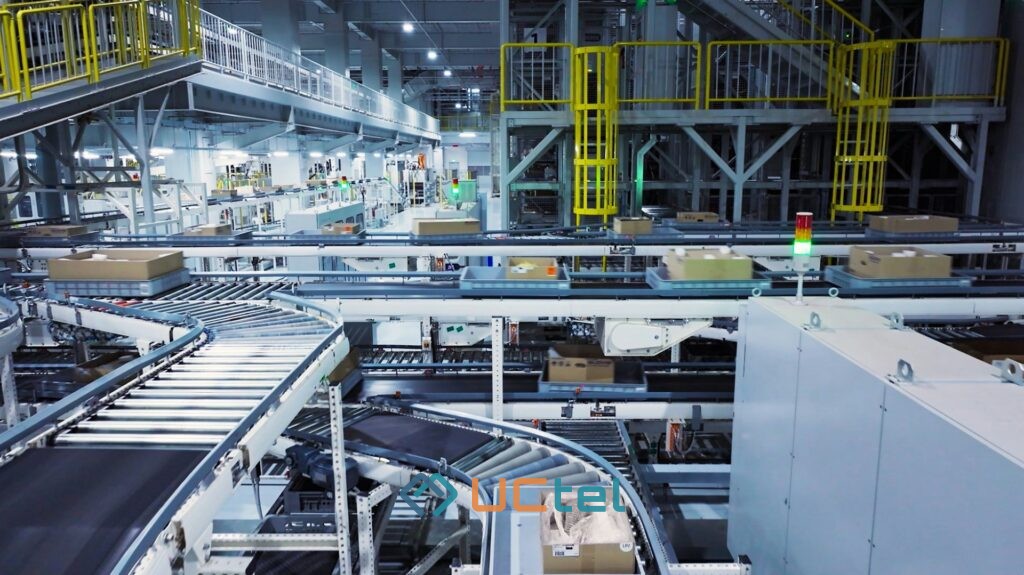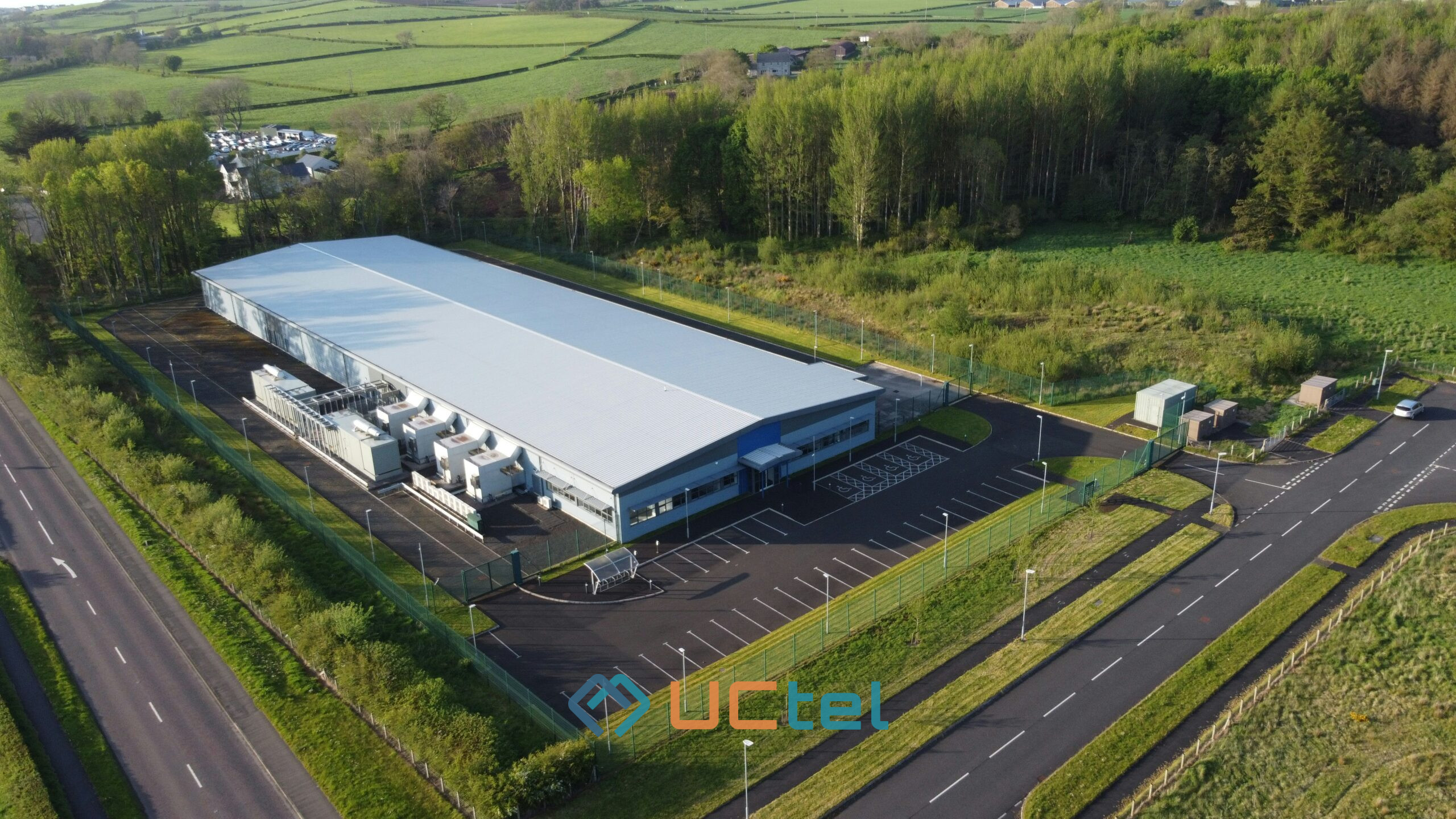Who Provides Mobile Network Coverage for Smart Factories in the UK?

Table of contents
Updated September 2025
In the age of Industry 4.0, smart factories cannot afford poor connectivity. From autonomous robots on the shop floor to predictive maintenance sensors and real-time video monitoring, every process depends on a secure, low-latency mobile network. Yet many UK manufacturers still struggle with patchy indoor coverage or outdated systems that fail to scale.
This guide explains what type of mobile connectivity smart factories really need, the difference between public and private coverage models, and how UCtel helps industrial sites design the right strategy, whether you are retrofitting an older factory or building a new smart facility from the ground up.
Follow-up Questions
What kind of mobile network does a smart factory require?
- Factories need ultra-reliable, low-latency connectivity for IoT, automation, and edge analytics, often combining public and private infrastructure.
When is private 5G preferred over public networks?
- When factories need full data control, guaranteed uptime, or deterministic performance for mission-critical operations.
What is a neutral-host solution?
- A shared indoor system that supports multiple operators at once, particularly useful for multi-tenant or public-access industrial sites.
How does a factory choose the right solution?
- By evaluating coverage requirements, device density, site layout, and operational risk.
What Mobile Connectivity Smart Factories Really Need
Modern industrial environments rely on mobile networks for:
- Real-time telemetry from thousands of IoT devices
- Autonomous guided vehicles (AGVs) and robotic systems
- Predictive maintenance and machine diagnostics
- High-resolution video and security monitoring
- Augmented reality (AR) training and remote support
These applications demand:
- Guaranteed indoor coverage across every zone
- High bandwidth for video and telemetry
- Ultra-low latency for automation and robotics
- On-site data control for security and compliance
Wi-Fi alone cannot meet these demands at scale. Factories increasingly adopt hybrid mobile models, combining private LTE/5G with edge computing, to secure resilience and growth.
Public vs Private Mobile Coverage in Factories
Public mobile coverage offers broad availability and simple onboarding, but indoor reliability can vary and control is limited.
Private mobile networks, by contrast, give factories:
- Local control of traffic and data routing
- Predictable, low-latency performance
- Dedicated resources for critical operations
- Secure, compliant infrastructure aligned with industry standards
For many manufacturers, the best option is a hybrid model: public coverage for non-critical needs, private 5G for production-critical processes, all integrated through a tailored indoor system.
Choosing the Right Setup: Factory Size & Connectivity Needs
Small factories / retrofits
- Ofcom licence-exempt boosters with rooftop donor antennas
- Quick to deploy, cost-effective, compliant
Mid-sized factories (5,000–20,000 m²)
- Private LTE in shared spectrum
- Passive DAS or small cells to extend indoor reach
- Hybrid fallback between public and private coverage
Large factories / campuses
- Full private 5G with edge integration
- Network slicing for robotics and automation
- Scalable to thousands of connected devices and future use cases
UCtel works with manufacturers at every stage, from signal audits to compliance design, ensuring each network matches both operational priorities and digital transformation goals.
The Future of Mobile in UK Manufacturing
The UK industrial sector is accelerating towards smart connectivity. Trends include:
- Growing adoption of private 5G for mission-critical control
- Wider use of edge computing to process data locally
- Hybrid models that combine public and private infrastructure
- More neutral-host deployments in retrofitted or multi-tenant factories
- Stronger emphasis on compliance and security in regulated industries
From simple boosters to full private networks, factories now have more flexible options than ever to build a resilient, scalable mobile infrastructure.
Conclusion
Smart factories cannot run on unreliable coverage. They need secure, resilient mobile networks that scale with IoT growth, automation, and Industry 4.0 requirements. Public networks provide reach, but mission-critical processes increasingly rely on private 5G and tailored indoor systems.
With over 6 years of expertise, UCtel helps UK manufacturers build future-ready mobile infrastructure, from simple boosters for retrofits to full private networks for greenfield plants. Whatever your site’s size or complexity, our Ofcom-compliant solutions ensure coverage, safety, and scalability.
Contact UCtel today to book a smart factory signal survey and design the right mobile strategy for your operations.
Frequently Asked Questions
Is private 5G legal in the UK?
- Yes. Ofcom has released shared spectrum for local industrial use.
Do I really need private 5G?
- Not always. It depends on your latency, security, and uptime requirements. Some retrofits achieve excellent results with Ofcom-compliant boosters and DAS.
What’s the best solution for an older factory with poor indoor signal?
- CEL-FI boosters combined with a distributed antenna overlay are often the most efficient and compliant option.
How does UCtel help with smart factory coverage?
- We design end-to-end solutions, from surveys and heatmaps to installation and long-term monitoring, tailored to each site’s operational needs.
Can UCtel deliver hybrid deployments?
- Yes. We specialise in mixed coverage strategies, combining public network access with private 5G overlays and neutral-host infrastructure.





